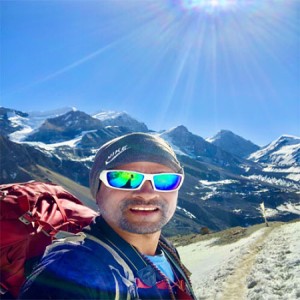The Everest Base Camp trek is on everyone’s bucket list. Trekking to the base camp of the world’s tallest mountain is not a feat one can achieve every day, after all. However, it is widely believed that trekking in the Everest region has a particular season. Now, that is not completely untrue; certain times of the year are more pleasant than the rest, but it is also true that nothing can stop an experienced trekker or one with a great trekking guide!
We all know the Everest region (Khumbu region) is particularly beautiful during March, April, and May in spring and September, October, and November to mid-December in autumn to late autumn (fall-late fall). That leaves us with mostly monsoon. What about trekking in the Everest region in a monsoon? Trekking to the Everest Base Camp in the monsoon months of June, July, and August is usually deemed an impossible task. Now, I am not saying there aren’t obvious dangers of trekking the Himalaya in the rainy season, but it is not ridiculously dangerous or impractical either.
Everest Base Camp in the monsoon months of June, July, and August?
1: Less crowded—the Everest region sees over 40,000 tourists every year. If you have ever wanted to have Everest to yourself, then monsoon is the time to go. The cloud patterns are absolutely gorgeous, and the vegetation is sprawling. People avoid this trek in the monsoon, as spring and autumn are widely recognized as the only seasons to trek in Everest. So, the route is fairly devoid of tourists. You can enjoy the beauty of this high-altitude Himalayan trek in solitude if that is what attracts you.
2: Walking in the clouds: Monsoon brings the formation of massive clouds. Now, when you are trekking above 3,000 m, such heavy clouds mean that you will be able to witness the surreal feeling of almost walking in the clouds, as you see them cover the hills and mountains. It is a truly great photographic opportunity as well.
3: Rain—Even though rain is supposed to be a hurdle, it doesn’t have to be. Sitting in your teahouse sipping hot tea while enjoying the splattering sound of the rain in the Himalayas is a truly unique experience. The vegetation is green, so you get to enjoy great views of green hills.
And, after heavy rainfall, the clouds clear out to show the mighty mountains like Ama Dablam, Mount Everest (8,848 m), Mt. Pumori, Nuptse, Thamserku, and others. What are the dangers of trekking in the Everest region (Khumbu region) during the monsoon (June, July, and August), and how do you combat them?
These are inconveniences rather than actual dangers. Here are a few things to keep in mind:
1: Flight delays: Heavy clouds and strong winds can result in unfavorable weather for flights to and from Lukla. So, keeping a contingency day in your itinerary for the Everest Base Camp Trek is probably for the best if you plan to trek in the monsoon. For those who do not want to take the flight from Kathmandu to Luka, you can always pick the classic Everest Base Camp Trek itinerary.
2: Slippery trails: This is probably one of the major concerns for a monsoon trek in the Himalaya. Yes, the trails are rocky, and with continuous rainfall, they can get quite slippery. However, this is a hurdle one can overcome by being a little more cautious than usual, trekking with a guide, and wearing shoes with good grip.
3: Not enough mountain views—This is one of the major reasons why the Everest region doesn’t see many trekkers during monsoon. While it is true that the clouds will block mountain views, it is also true that heavy rain will clear the clouds, making way for the mountains. You might not get stunning views every day like during a trek in the perfect season, but you do still get them.
To do or not to do? Is the Everest Base Camp Trek possible in a monsoon?
While it is not advised, the Everest Base Camp trek in monsoon is possible. There are downsides to it, but there are equally appealing advantages as well, as we mentioned above. Now, whether or not you want to undertake this adventure in monsoon is completely up to you. If you have travel plans during June, July, and August and want to trek the Everest region, you shouldn’t cancel because of the monsoon.
The few challenges presented by monsoon can be easily tackled. One of the key factors for a successful monsoon trek to the Everest region is your trekking guide/leader. So, always choose one wisely. For accountability and better management purposes, arranging your trek with a reliable trekking agency in Nepal is a good option.



